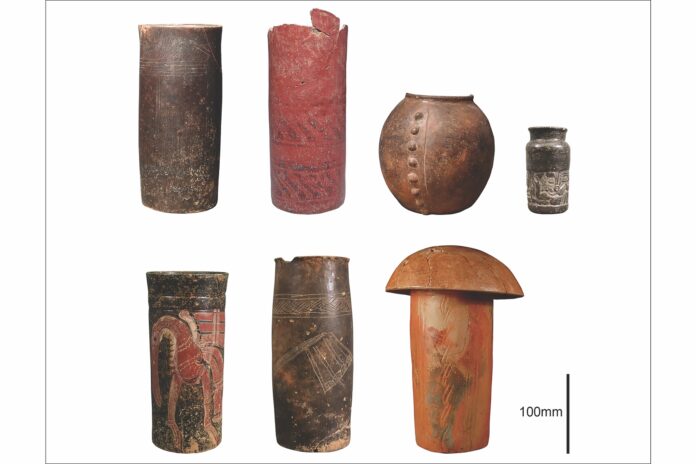Archaeologists have found evidence to suggest that the ancient Maya consumed tobacco as a drink, possibly for ritual and healing purposes.
For a study published in the journal Antiquity, a team of researchers analyzed chemical residues from cylindrical ceramic vases found in the archaeological zone of Cotzumalhuapa, an ancient city on the coast of Guatemala.
This study revealed physical evidence of tobacco use at the site during the Late Classic Period (A.D. 650-950) of Mesoamerican history. Specifically, researchers detected traces of nicotine in the residues, indicating that the vessels contained tobacco infusions or other liquid preparations.
The results suggest an ancient ritual practice involving tobacco for which no previous physical evidence has been found in Mesoamerica—the historical and cultural region that extends across most of Central America and southern parts of North America.
Antiquity
The widespread significance of tobacco in Mesoamerica is documented in historical sources and by other evidence, such as artwork depicting the leaves of the plant. But recovery of the organic remains of tobacco in archaeological contexts is rare, particularly from precolonial times.
“We knew that tobacco was a very important substance employed for a variety of ritual and therapeutic purposes in ancient Mesoamerica and across the New World,” study co-author Oswaldo Chinchilla Mazariegos of Yale University said in a press release. “However, archaeological evidence is scarce because the remains of tobacco rarely preserve well.”
Cotzumalhuapa was one of the largest and most important Mayan cities in Mesoamerica during the Late Classic Period. But little is known about the ritual practices that took place at the site.
The Mayan civilization dominated what is now southeastern Mexico, Guatemala, Belize and the western areas of El Salvador and Honduras for more than 3,000 years until the era of Spanish colonization.
The ancient Maya were notable for their striking architecture and art; advanced calendar, mathematics and astronomical system; and for creating the only fully developed writing system in pre-Hispanic America.
In the latest study, the researchers wanted to understand more about the rituals that once took place in Cotzumalhuapa, which is near the modern town of Santa Lucía Cotzumalguapa. To do this, the researchers analyzed chemical residues from seven ceramic vessels discovered near the acropolis of El Baúl.
“We hoped that analysis of residues inside these well-preserved vessels would reveal details about the use of plants in ritual activities,” Chinchilla Mazariegos said.

These vessels tested negative for traces of cacao, chili peppers and achiote—an orange-red food coloring and condiment. But three of the vessels yielded positive results for traces of nicotine. The vessels were of a shape typically used to contain liquids, and as a result, the discovery of tobacco residue surprised the researchers.
The find suggests that the tobacco may have been consumed, in this case, as some form of liquid infusion rather than smoked. Previous evidence has found evidence of tobacco being smoked as a dried leaf or sniffed in powder form in Mesoamerica.
While the widespread use of tobacco for both ritual and medicinal purposes—the two were almost certainly linked—is well documented from early colonial to modern times in Mesoamerica, the study provides physical evidence that such practices took place several centuries earlier.
Do you have a tip on a science story that Newsweek should be covering? Do you have a question about archaeology? Let us know via [email protected].
Uncommon Knowledge
Newsweek is committed to challenging conventional wisdom and finding connections in the search for common ground.
Newsweek is committed to challenging conventional wisdom and finding connections in the search for common ground.


